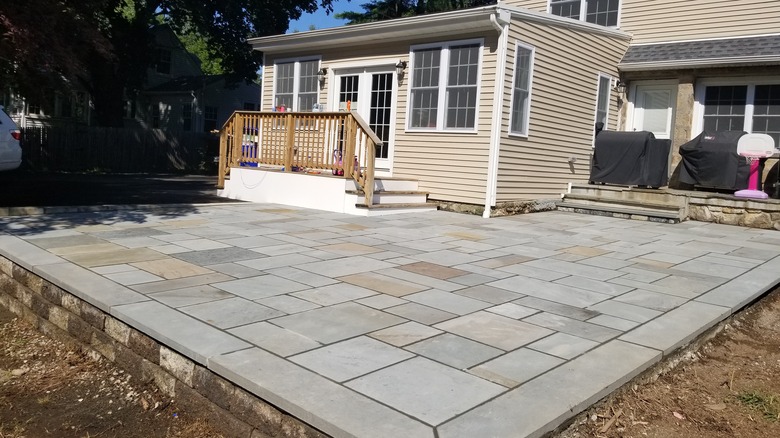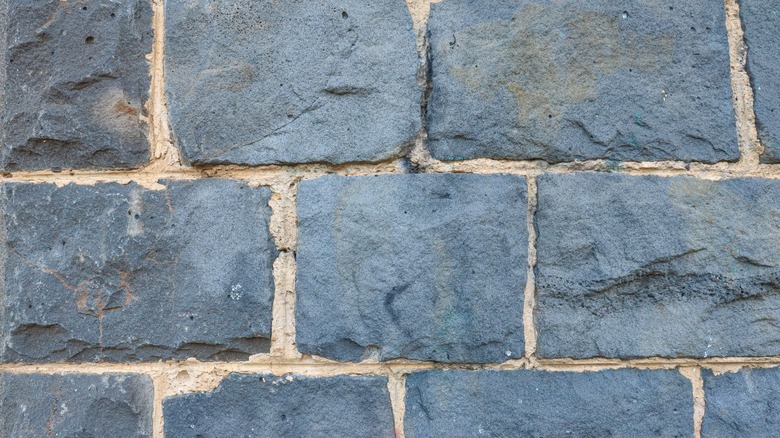Considering A Bluestone Patio? Don't Look Past These Essential Details
Bluestone patios are natural stone patios that can add a touch of luxury to your backyard. These patios are usually made out of large bluestone pavers, which are either limestone or sandstone, depending on where they were quarried. The pavers are tinted blue and often have bronze or gray veins running through them, creating a more unique design than clay or concrete options. Their dark blue appearance looks amazing paired with surrounding greenery and flower beds, helping it pop against the landscape. Because of this, more and more people are incorporating bluestone patios into their landscaping design. However, if you're considering doing the same, there are some essential details you should be aware of before jumping in. Using this type of stone has its unique set of benefits and drawbacks.
Some of its benefits have to do with the design itself. Because of its unique color, it creates a memorable look that will help you design your perfect patio. However, since it's a natural stone, it's more prone to damage than synthetic alternatives. You can expect everything from flaking to stain absorption. Below is everything you should be aware of before creating a bluestone patio.
The benefits of bluestone patios
Bluestone, much like marble or granite, comes in many different shade variations. You can opt for a dark blue version to create a bold statement or go subtler with a grayish variety for a more understated look. Some bluestones even have greenish or yellowish tints to them, adding a unique touch to your patio design. In addition to boosting your home's curb appeal, bluestone is also a relatively durable stone to choose. It's very dense, meaning that it won't crumble as easily during harsh weather conditions or temperature fluctuations. It rates a six on the Mohs Hardness Scale, which means it's stronger than marble, which comes in at a five. However, it's important to note that bluestone requires regular sealing to maintain its durability. If not sealed, water can seep into the stone, and the added moisture can crumble the rock as it expands when it turns into ice.
It also is one of the more affordable pavers you can use to create your patio. The stone can cost between $5 to $12 per square foot, which admittedly is more expensive than gravel, which costs between $1 to $4 per square foot. However, it's comparable to concrete, at $6 and $15 per square foot and is arguably more artistic. However, brick can cost between $6 to $30, travertine can be $11 to $25, and stamped concrete can be $8 to $28. This makes bluestone one of the more budget-friendly options without sacrificing its higher-end aesthetic.
The drawbacks of bluestone patios
One of the drawbacks to bluestone patios is their tendency to absorb more heat than alternatives such as concrete due to their dark color. During the summer, this can make sitting on the patio a little hotter and walking on it barefoot a challenge. However, there are practical workarounds to this. For instance, you can spray your patio down with a hose to cool it, but that would add an extra step to your day-to-day routine.
Additionally, while bluestone is dense and strong, it's susceptible to flaking if unsealed or if the seal is wearing down. However, this is the natural state of the stone. It's made from tightly packed sedimentary layers, and over the years it will begin to flake off. This will be accelerated if water soaks into the stone and freezes, which expands the rock and causes weak points. Plus, since it's a natural stone, it can also be more prone to etching if in contact with acidic liquids. This can be anything from a wine spill or a cleaning attempt with vinegar. Because of this, you have to be a little more careful around it than, say, brick pavers.

